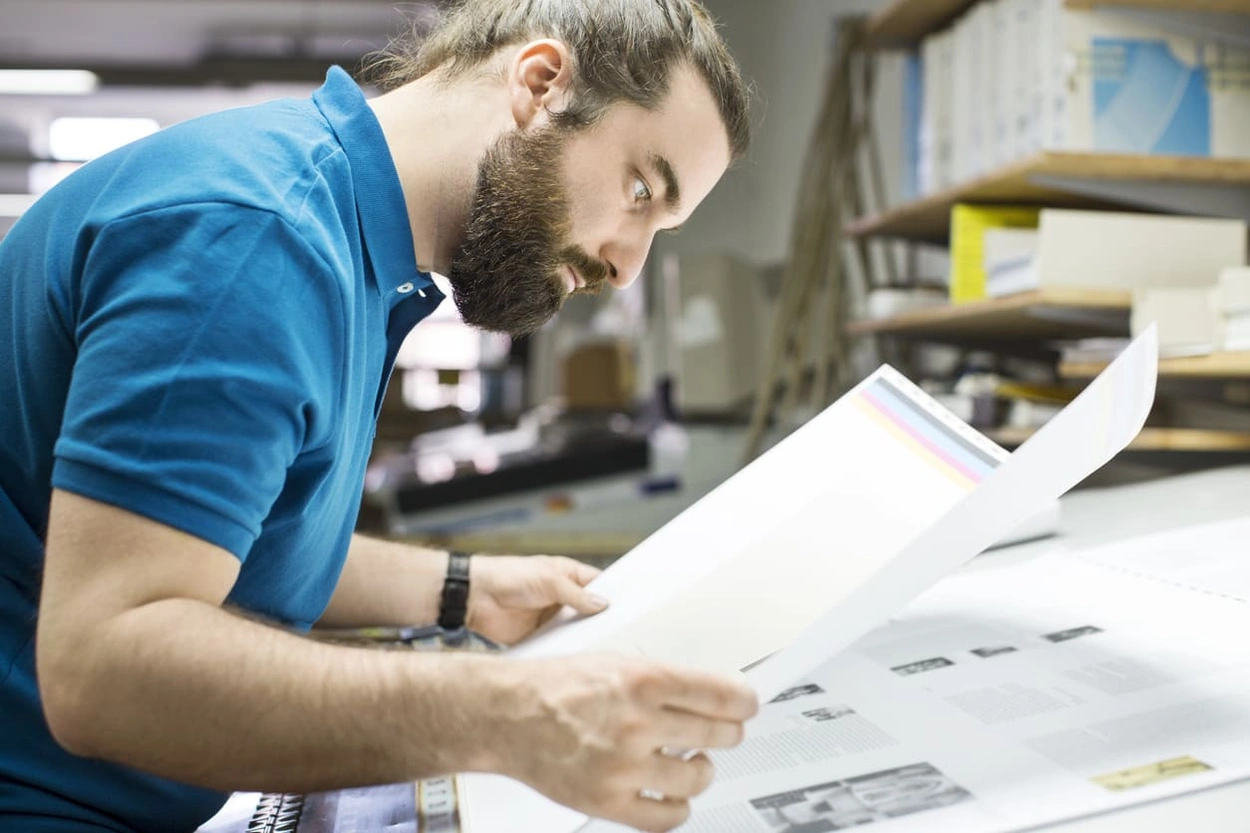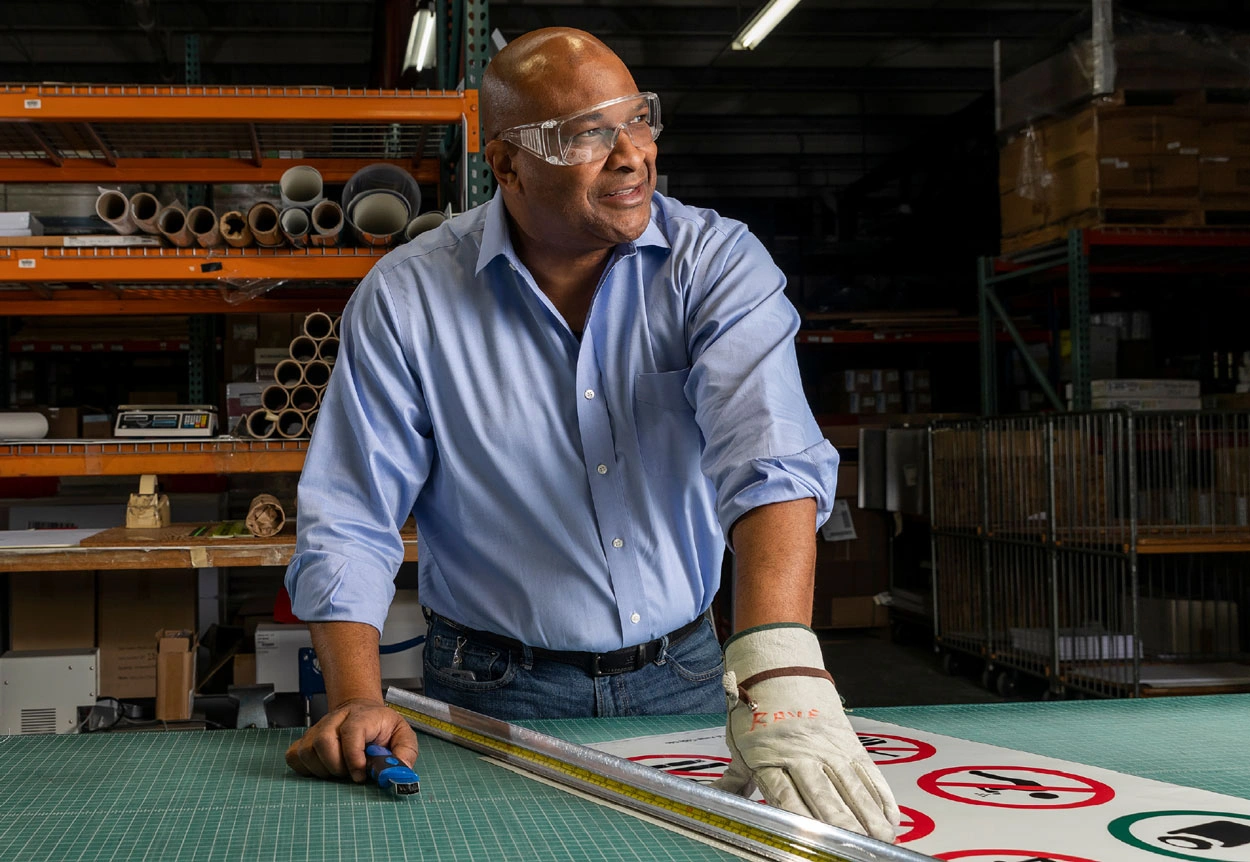Blog
Unlock your printing potential

Technická Tlač
|16 Jun 2021
10 ways you can optimize your print operations and reduce costs
Many print businesses that define themselves as specialists in wide-format printing now run multiple printers—both roll-to-roll and flatbed—and often with a variety of latex, aqueous, UV, and solvent inks.
Sometimes this also means tussling with several different RIP solutions driving those printers. And that’s just the print process—there’s also print finishing to consider. It’s a complex world, and that’s why print businesses are focusing on efficiency like never before.
Continually seek out ways to make improvements

Communication with your staff is vital

Audit your current print production

Consider consolidating your RIP solutions

Embrace connected printing to eliminate wasted time

Connect online orders and production
Some corners of the print industry have been faster than others when it comes to embracing the digital world. Where does your business stand? One step in the right direction is to connect your e-commerce platform and/or online orders with your production capability.
That will enable you to move into a more seamless printing process, saving you valuable time and money. The digital economy is thriving and you should make sure you’re set to take advantage of the opportunities it offers.

Consider existing tools that can help to eliminate wasted materials

Don’t accept mistakes, demand excellence
Mistakes happen, but accepting them makes errors more likely and numerous small errors can quickly become a significant cost. Understanding where the mistakes are happening is critical; you can then figure out how they can be reduced as there are lots of things you can do to ensure the best quality work, every time. For example, printing multiple substrates—both flexible and rigid—with a single
technology will help to ensure color consistency and quality across an entire print campaign. And you could also look at your workflow process: anti-scratch prints don’t need laminating for short-term applications— removing one step of a typical workflow—and instantly dry output would reduce your print production time as it doesn’t need outgassing.

Automate labor-intensive processes and maintenance
Using automated solutions to replace manual processes can save print providers time and money. For example, the routine maintenance of printheads and white ink cartridges can be time-consuming, labor-intensive, and impact your overall productivity.
Using an automated solution not only reduces your business’s manual labor hours but prevents more costly delays in the long term—such as waiting for a technical service intervention to replace your printheads.

Teamwork makes the dream work
Staff that are used to doing things a certain way might be resistant to change. Again, this is where good communication is key. If they know why the changes are being made, were involved in the decision-making process, and are subsequently trained in how to make those changes, then they are more likely to transition effectively and embrace these new production efficiencies.

You Might Also Like

Everything you need to know about choosing a plotter printer

Everything You Need to Know About Plotters and Their Applications
AEC Marketing: Effective Ways for AECs to Market Their Firms

How Digitization Is Meeting The Hybrid Working Challenges That Engineers Are Facing

How industry transformation drives change for PSPs

3 Trends Transforming Large Format Print

Get ready for the future of design and construction

HP Latex 700, 800 or R-series: Which is right for you?

How Digitization Makes You More Efficient On-Site

Protect Future Builds From Existing Threats

How IT Leaders Can Support More Sustainable Building

HP DesignJet Studio: Design Meets Performance
Vyberte svoju krajinu/oblasť a jazyk
Close Country/Region Selector Dialog- Africa
- Afrique
- België
- Belgique
- Česká republika
- Danmark
- Deutschland
- Eesti
- España
- France
- Hrvatska
- Ireland
- Italia
- Latvija
- Lietuva
- Magyarország
- Middle East
- Nederland
- Nigeria
- Norge
- Österreich
- Polska
- Portugal
- România
- Saudi Arabia
- Slovenija
- Slovensko
- South Africa
- Suisse
- Suomi
- Sverige
- Switzerland
- Türkiye
- United Kingdom
- Ελλάδα
- България
- Казахстан
- Србија
- Україна
- ישראל
- الشرق الأوسط
- المملكة العربية السعودية
HP Worldwide
Vyberte svoju krajinu/oblasť a jazyk
- Africa
- Afrique
- América Central
- Argentina
- Asia Pacific
- Australia
- Bangladesh
- België
- Belgique
- Bolivia
- Brasil
- Canada
- Canada - Français
- Caribbean
- Česká republika
- Chile
- Colombia
- Danmark
- Deutschland
- Ecuador
- Eesti
- España
- France
- Hong Kong SAR
- Hrvatska
- India
- Indonesia
- Ireland
- Italia
- Latvija
- Lietuva
- Magyarország
- Malaysia
- México
- Middle East
- Nederland
- New Zealand
- Nigeria
- Norge
- Österreich
- Pakistan
- Paraguay
- Perú
- Philippines
- Polska
- Portugal
- Puerto Rico
- România
- Saudi Arabia
- Singapore
- Slovenija
- Slovensko
- South Africa
- Sri Lanka
- Suisse
- Suomi
- Sverige
- Switzerland
- Türkiye
- United Kingdom
- United States
- Uruguay
- Venezuela
- Việt Nam
- Ελλάδα
- България
- Казахстан
- Србија
- Україна
- ישראל
- الشرق الأوسط
- المملكة العربية السعودية
- ไทย
- 中华人民共和国
- 臺灣 地區
- 日本
- 香港特別行政區
- 한국
- Stiahnutie z trhu |
- Recyklácia produktov |
- Zjednodušenie ovládania |
- Ochrana osobných údajov |
- Súbory „cookie“ a výber reklám |
- Práva osobných údajov |
- Podmienky používania |
- Zákonná záruka spotrebiteľa |
- Vyhlásenie o obmedzenej záruke |
©2025 HP Development Company, L.P. Informácie uvedené v tomto dokumente sa môžu zmeniť bez predchádzajúceho upozornenia.